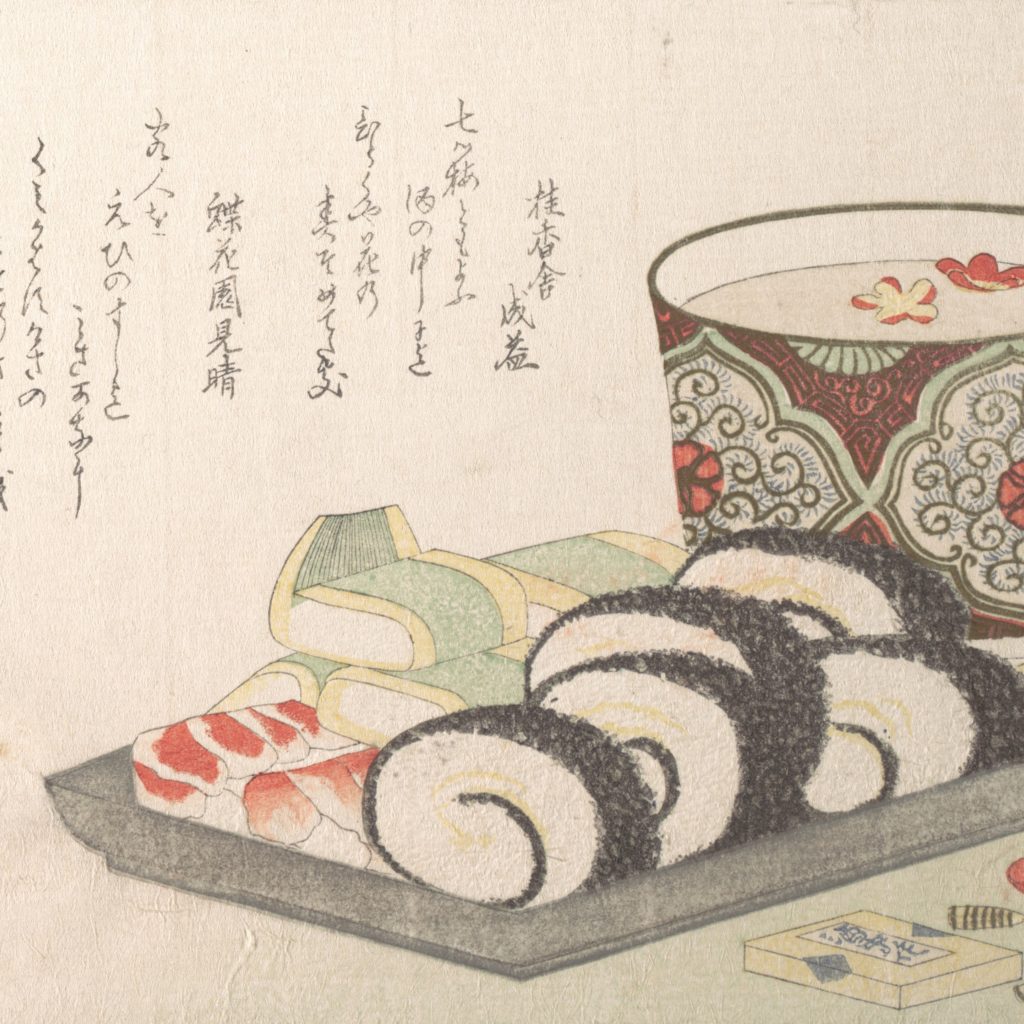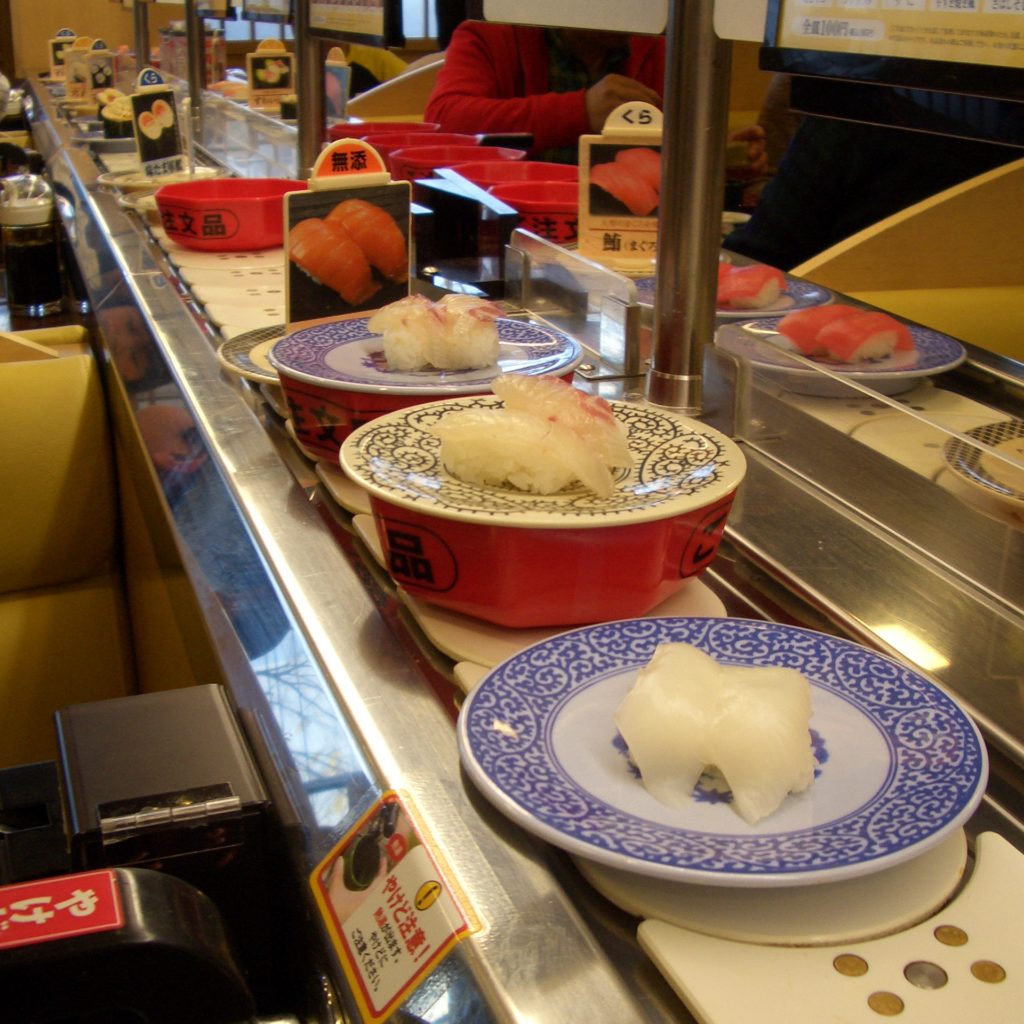Nowadays, sushi is almost everywhere, both in big cities and small towns. This could be attributed to Japanese soft power, marketing strategy, and gastro-diplomacy. But also to globalization, the enormous food industry, and the internet, which has already positioned it as the most consumed dish worldwide, after pizza, according to the platform Taste Atlas.
Most Japanese language students have tried sushi at least once. There are many types, such as nigirizushi, makizushi, gunkan, temaki, chirashi, and so on. It basically consists of rice–the Japanese variety japonica–seasoned with vinegar, accompanied by a protein or vegetable, and eaten with soy sauce. The modern sushi we know now has about 200 hundred years, and it was common street food during the Japanese Edo period (1603-1868). But what happened in the previous years? And where it originally comes from? These are questions we’ll try to answer below.

Ancient fermentation method
In his book “Sushi” (1986), the chef and researcher Masuo Yoshino (1906-1991) explains that sushi has very old ancestors. It comes from an ancient way of preserving fish in salt and rice through fermentation when refrigerators were not invented yet. But surprisingly, after this process, rice was discarded, and people only ate the remaining fish. Some media claim that the real origin of sushi is China because that method has its first written reference in a Chinese dictionary from the 2nd century. Of course, it was not called sushi and that reference doesn’t mean that was its origin.
Although China has always greatly influenced Japan, there are several clarifications regarding sushi. First, sushi has no close relatives in China today. Instead, they have the kimbap rolls in Korea, which is disputed if they were born during the Japanese occupation (1910-1945) or in the Korean Joseon era (1392-1910). Even though the fish preservation technique arrived in Japan during the 7th century from China, it didn’t survive there. While in Japan, rice gained prominence and began to be eaten together with fish, so much so that it is now the main sushi ingredient.
According to Yoshino, who was the third generation owner of the Yoshino Sushi Honten restaurant in Tokyo (founded in 1879 and still in operation), there is evidence of preparations similar to funa-zushi, the oldest sushi, both in the Himalayan area and in many countries in Southeast Asia. This type of sushi, prepared for over a thousand years at Shiga prefecture in Japan, is fermented for several months and can be preserved for up to 3 years. In addition, Yoshino recounts that he tried “Kassam,” a food from the Iban tribe of North Burneo, which resembles funa-zushi.
From funa-zushi to haya-zushi
It is tough to figure out when funa-zushi changed its name to nare-zushi. This kind of sushi was made by placing a stone on top to remove the air from the rice, which was still discarded. Then, during the 15th century, nama-nari-zushi appeared, for which a heavier stone was used, shortening the fermentation time to one month, and was eaten when the fish had not yet fully fermented (nama means “raw”). Yoshino points out that the stone technique was not employed anywhere else but in Japan, so that characterizes sushi since, in some way, all types of sushi are pressed.
Vinegar started to be the main ingredient for fermentation around the year 1650, for a type of sushi made in wooden boxes called haya-zushi, or “quick sushi,” because the time for fermentation was considerably reduced to half a day from that point. Endless variations of haya-sushi were created that are still enjoyed in Japan today, for example, the sushi rolls (from the 1790s) and the nigirizushi (from the 1800s), which is made by hand.

In present Japan, sushi is usually eaten outside. There are high-end celebrity chef restaurants—like Jiro Ono‘s in Tokyo from the documentary “Jiro Dreams of Sushi”—and more affordable sushi chains like much kaiten sushi (known also as “kuro kuro sushi”), devised by chef Yoshiaki Shiraishi, in 1958. In these places, the sushi is served on small plates that reach the diner through a conveyor belt in front of the tables, which helps to lower costs. It is a highly recommended experience for those visiting Japan.
References:
- Yoshino, M. (1986). Sushi. Japan Publications.
- Taste Atlas (updated 16 August 2023). “10 Most Popular Foods in the World”. https://www.tasteatlas.com/most-popular-food-in-the-world



Leave a Comment